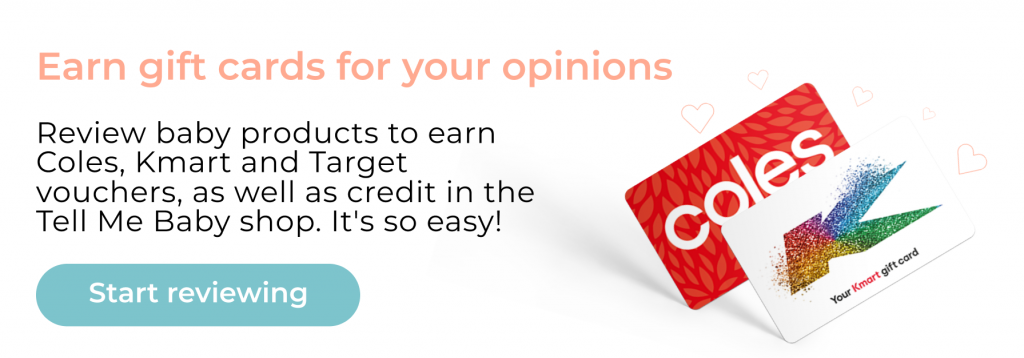The best and worst yoghurt pouches (plus a choking hazard warning)

Yoghurt pouches: they’re an excellent snack for little ones, and make little mess.
But are they healthy? That’s the questions CHOICE set out to answer.
A new CHOICE review of 118 different yoghurt pouches – including Yoplait Petit Miam, Chobani, Tamar Valley Kids and Farmers Union – revealed the best products and worst offenders.
“Squeezy pouches of yoghurt are a really popular choice for lunch boxes. Many of these yoghurts contain a good amount of calcium, and many contain small amounts of added sugars, so they’re a good option in terms of packaged snacks available for children,” says CHOICE expert Marianna Longmire.
“With over 100 options to choose from, it can be really difficult to tell which yoghurt pouches are the healthiest options for your kids.”

Sugar: how much is too much?
Since their last yoghurt review in 2016 where all the yoghurt contain added sugar, there have been some improvements.
“This year, there’s been some improvement to sugar content. 64% of the yoghurt pouches we reviewed had added sugar, and 36% of the products had lower sugars coming primarily from dairy or real fruit,” says Marianna.
“If you can’t tell from the ingredients list whether there’s added sugar in a yoghurt product, look at the nutritional information panel on the back. Of the products we looked at, natural yoghurt contains roughly 5-6% intrinsic (naturally occurring) sugars. So if the value of the total sugar is more than 7g per 100g, it probably contains added sugars.”
High-sugar yoghurt pouches
The following 10 (ordered alphabetically) contain the most sugar. All had 12g or more sugar per 100g:
- Aldi Just Organic Yogurt (70g pouch: vanilla bean, strawberry, blueberry; 140g pouch: vanilla bean, strawberry)
- Aldi Yoguri Greek Style High Protein Yogurt (strawberry)
- Chobani (blueberry, strawberry)
- Coles Yoghurt Pouch (blueberry)
- Five:am Organic (vanilla bean)
Beware: carrot concentrate
It might sound healthy, but carrot concentrate is just the colour and sugar from this delicious vegetable.
“If you spotted this ingredient on yoghurt packaging, it would be reasonable to assume it was a healthy addition. However, carrot concentrate is actually just the colour and sugars from a carrot, not the fibre and other nutrients that can be found in a whole carrot,” says Marianna.
As for fruit content, Marianna says it’s likely just jam.
“Don’t be surprised if the fruit content of your yoghurt doesn’t live up to the pictures on the label. Some yoghurts do seem to be flavoured with minimally processed real fruit. The fruit content in other yoghurt products is more like jam made from fruit purée, water and sugar, with thickeners, colours and food acids,” she says.
Calcium and protein
Yoghurt is known as good source of calcium, but less than half of the yoghurt pouches CHOICE tested contained enough calcium.
“Yoghurt needs to contain 175 milligrams of calcium or more per pouch to be a good source of calcium for children in the four to eight-year-old bracket,” says Marianna.
As for protein, don’t believe everything you read on the packaging.
Marianna says, “It’s important to be wary of claims about protein if this is particularly important to you. While all yoghurts contain protein, we found that 60 yoghurt products contained less than half the amount of protein to qualify as a ‘good source.’
“According to the Food Standard Code, a product must contain at least 10 grams of protein per serving to qualify as a ‘good source’ of protein.”
Health star ratings
If all of this information is going way over your head, you aren’t alone. To help parents with their buying decisions, CHOICE crunched some numbers to check the Health Star Ratings (HSR) of the yoghurt pouches that displayed them (about 11%). The great news is that all of them were accurate.
The following 21 products have an HSR of 5:
- Chobani (vanilla, raspberry, pineapple coconut)
- Chobani FIT (coconut, vanilla, blueberry, strawberry, raspberry, banana)
- Danone Yopro (banana, mango, strawberry, vanilla, blueberry)
- Sanitarium Up & Go (banana, vanilla, milk chocolate)
- Siggi’s Skyr Yoghurt Pouch (mango, passionfruit, raspberry, vanilla)
When in doubt
Still not sure? You can’t beat natural yoghurt.
CHOICE says on their website, “Natural yoghurt from the supermarket will contain two basic ingredients: milk and live yoghurt cultures.”
As for the kids’ squeezy yoghurts they looked at in their review, only two were natural:
- Farmers Union Greek Style Yoghurt Pouch
- Rafferty’s Garden – The Rafferty’s Garden Natural No Added Sugar Yoghurt 6m+ currently has a 4.7-star rating on Tell Me Baby.
“Love that there is no sugar & it’s completely natural, said one parent in their review. “No nasties & bub eats it on his own with no problem. Beautiful smooth consistency. My little one especially loves it when I mix this with some puréed fresh fruit as well like pears, bananas or apples. In a convenient pack to take anywhere also.”
Read more Rafferty’s Garden Natural Yoghurt reviews.
Choking-hazard
Last but most important: some yoghurt pouch lids are a choking hazard for small children.
“We found that two different types of screw-top lids were used on the yoghurts – a larger ‘mushroom’-shaped lid and a smaller screw-top lid similar to those found on some kinds of toothpaste,” they write on their website.
“No matter which lid your yoghurt has, both are choking hazards when removed from the pouch and should be kept out of the mouths of children. Three in five (62%) of the products we looked at had a choking warning on the packaging.”
Read more:
















